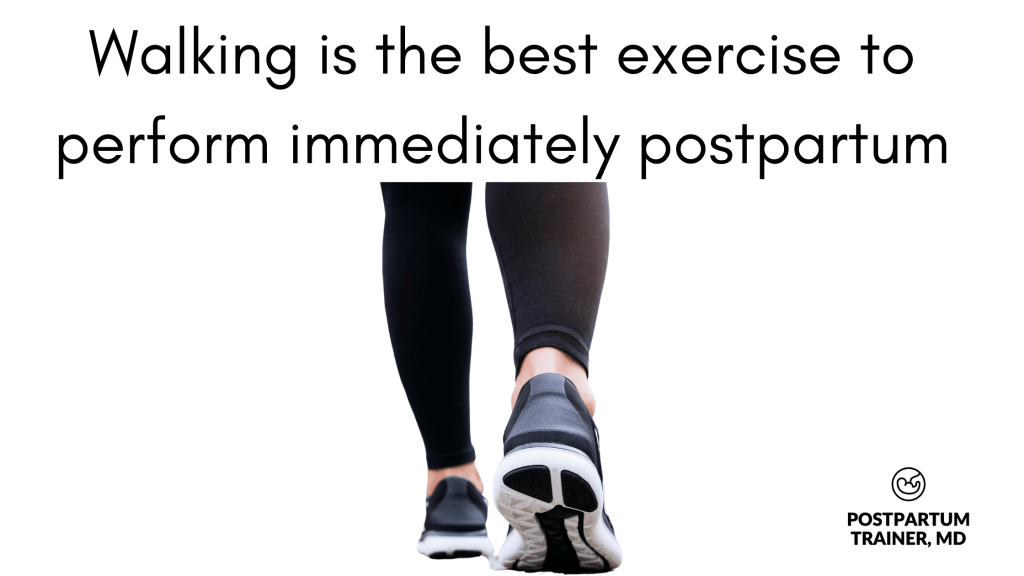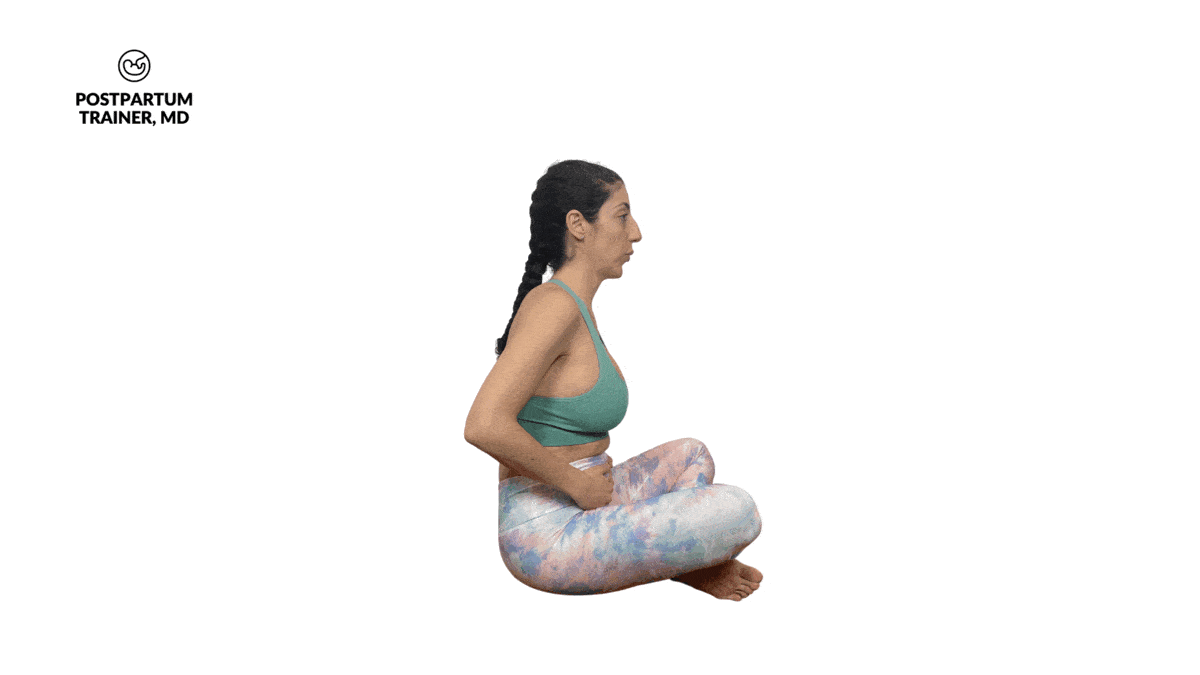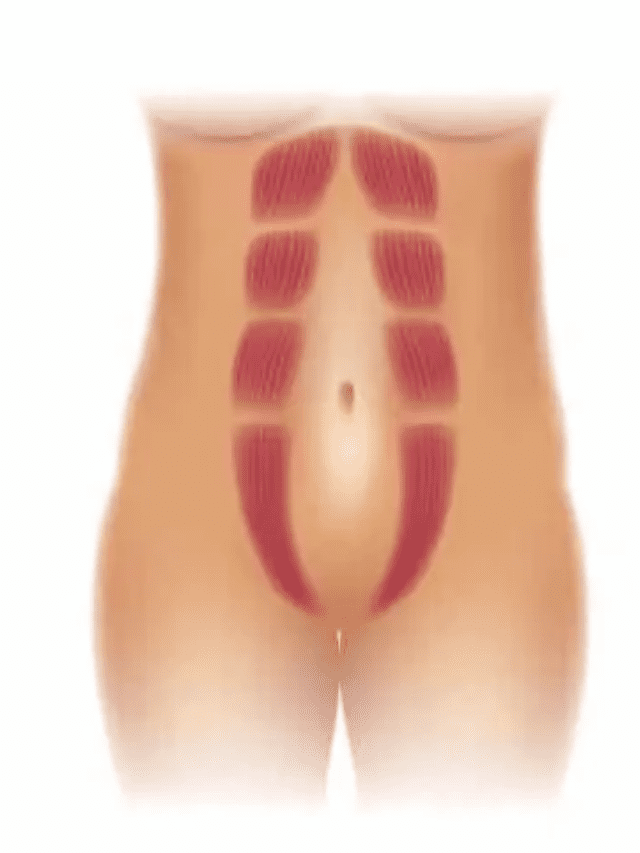You may be eager to return to your exercise routine after a c-section.
But how and when should you do it?
Unfortunately, many OBGYNs don’t feel comfortable providing recommendations as they often don’t know the best approach.
In this article, you’ll learn how to get back into an exercise routine after your surgery safely.
When Can You Start Exercising After A C-Section?
Most OBGYNs will recommend that you wait 6 to 8 weeks after surgery to resume regular exercise. However, if you feel up for it, you can do some light activity as early as 2-3 days after the procedure.
It all depends on how you are recovering and how extensive your cesarean section was.
Your doctor or health care provider will assess you at six weeks postnatal check and give you the green light if it’s safe to start exercising more aggressively.
What Types of Exercises Should You Start With?
In the early days after your surgery, engaging in gentle exercises to strengthen your leg, pelvic floor, and core muscles is perfectly safe.
Some examples include:
- Gentle walks
- Pelvic floor exercises
- Deep core breathing exercises
While these may not sound exciting, it is important to remember that this is not a race. You need to be patient with your body and allow yourself time to regain strength safely.
It’s normal to feel some mild discomfort during the initial days of working out but stop immediately if you experience pain or other concerning symptoms.
Here are the benefits of doing light activity a few days after the surgery.
Gentle Walking
Walking is a great, low-impact exercise that is essential for postpartum recovery. It helps improve blood flow and activates all of the muscles in the lower body.
Start with short walks, gradually increasing the duration and intensity as you feel comfortable. Aim for at least 10 minutes of walking daily in as many sets as necessary.

Pelvic Floor Strengthening
Pelvic floor exercises are another essential exercise to aid in c-section recovery. Believe it or not, you can still develop pelvic floor dysfunction (aka incontinence and prolapse) after a c-section.
As such, all moms should focus on rebuilding the pelvic floor muscles.
The best exercise to start with is the Kegel exercise.
To perform them, contract your pelvic floor muscles as if you’re trying to stop the flow of urine. Hold the contraction for a few seconds and then relax.
Repeat this process ten times, working up to several sets throughout the day.
Deep Core Breathing Exercises
The last exercise is deep core breathing, aka diaphragmatic breathing. This simple exercise is helpful for strengthening the muscles of the abdominal wall (including the transverse abdominis) while teaching you how to engage your diaphragm muscle.
It is also one of the best exercises for treating diastasis recti.
My favorite way of doing this exercise is sitting tall with your knees bent and crossed in front of you.
From a seated position, take a deep breath and focus on expanding your abdomen as much as possible.
After the inhalation hold for one second, and then exhale slowly and fully to feel your deep core muscles engaging.
Try to do 2-3 sets of 5-10 breaths.

When Can You Lift Weights After C-Section?
The recovery time varies from person to person, but in general, you can begin lifting weights after 6-8 weeks post-surgery if your recovery goes well.
When you get the green light to start weight training, ease into your routine gradually.
It is a good idea to:
- Wear a supportive abdominal binder during exercise.
- Focus on strengthening your core and pelvic muscles first.
- Start with bodyweight exercises and incorporate light weights gradually.
It’s crucial to pay attention to your body’s signals. Stop exercising immediately if you experience pain, discomfort, or other unusual symptoms.
Remember that everyone’s recovery journey is different, so don’t compare yourself to other mothers, and be patient with yourself.
Which Exercises Should You Avoid?
So what exercises should you avoid following a c-section (and any other major surgery, for that matter?)
They include:
- High-impact exercises: Vigorous exercise such as running, jumping, or doing intense aerobics can put excessive stress on your incision and weak pelvic floor.
- Heavy lifting: Avoid lifting heavy weights during the initial stages of your recovery. The added pressure from weights can strain your abdominal muscles and incision.
- Direct abdominal exercise: Intense abdominal exercises like crunches, sit-ups, and full planks can negatively affect your weakened abdominal muscles.
- Deep twisting movements: Any type of exercise involving deep twisting, like certain yoga poses or Pilates moves, stresses your abdominal muscles and may slow down the healing process.
The good news is that this isn’t forever. As you get stronger and more comfortable with exercise post-c-section, you can gradually incorporate these elements into your training.
Other Precautions and Safety Information As You Resume Exercise Postpartum
Now let’s summarize some key safety information for post-c-section exercise.
- Start low: In the first few weeks, focus on gentle movements and controlled breathing exercises. As you become stronger and more comfortable, you can slowly start incorporating light bodyweight exercises into your routine.
- Progress gradually: Once you are ready to do resistance exercises – start with basic movements like wall push-ups, squatting to a chair, and modified side plank exercises.
- Listen to your body: Understand your body’s signals and discomfort, and stop at the earliest signs of pain. Your body will let you know if you’re overdoing it. Also, look out for pain in the c-section scar tissue or pain in the pubic bone.
A simple guideline to follow is to divide your recovery into three stages:
- Stage 1 (Weeks 1-6): Stick to controlled breathing exercises, walking, and pelvic floor work.
- Stage 2 (Weeks 6-8): Begin incorporating light resistance exercises such as body weight exercises and pelvic tilts.
- Stage 3 (Weeks 8 and beyond): Slowly increase the intensity with weight lifting and more advanced core exercises.
To see a more detailed explanation of this progression with some sample workouts, check out my post-c-section workout plan!
Other Related Questions
In this section, we will explore other related questions that you may have regarding exercise after a c-section.
How Long Does It Take for Muscles to Recover From C-Section?
It takes 6-8 weeks for your muscles to recover after a c-section. The reason is that your rectus abdominis muscles get stretched during the pregnancy and again during the operation to access the baby and the uterus. In some rare cases, the muscles may also get cut.

Does a C-Section Cause Muscle Weakness?
Yes, a cesarean delivery can cause temporary muscle weakness in your abdominal muscles and the connective tissue that holds them together. As such, you should avoid activities that cause too much pressure in the abdominal area, like sit-ups.
Thankfully, you can strengthen your stomach muscles using a dedicated diastasis recti workout program.
How Can I Reduce My Tummy After C-Section?
Reducing belly fat after a c-section requires a combination of patience, healthy eating, and the gradual incorporation of exercise.
Here are some tips to help you reduce your tummy:
- Allow your body adequate time to heal before trying to start a new diet or exercise routine.
- Begin with gentle, low-impact exercises that you can do consistently, such as walking and building core strength with breathing exercises.
- Once ready, you can begin strength training to increase lean muscle mass and boost metabolism. Also feel free to do other low-impact exercises like cycling or swimming.
- Focus on a balanced and nutritious diet to give your body the energy it needs to recover and support weight loss.
- Get enough sleep to support your hormones and allow the recovery process to follow.
Remember, it took your body nine months to accommodate your growing baby, so be patient and gentle with yourself as you work on losing fat after childbirth.
I go over this in more detail in how to lose the mommy pooch after pregnancy.
Final Words
Now that you’ve learned more about the importance of exercise after a c-section, it’s time to start incorporating these tips into your routine.
Before starting any exercise program, remember to wait at least six weeks postpartum and consult your healthcare professional.
Lastly, do not forget that this is a major surgery. Be patient with yourself as your body recovers, and listen to its unique needs.
Now I want to hear from you.
When did you begin to exercise after a c-section?
How long did it take for you to heal properly?
Comment below and let me know!
Other Related Posts:
